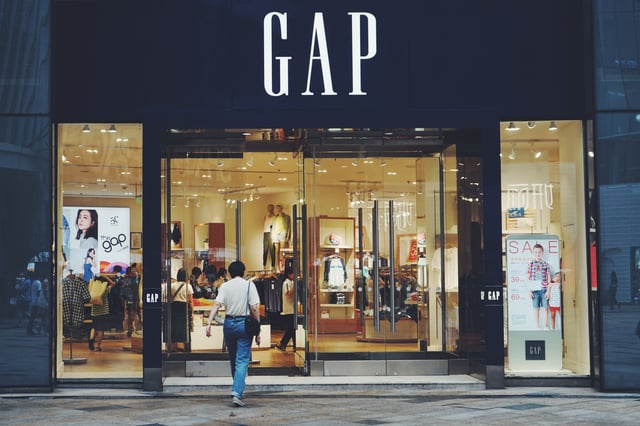The rise of online retailers has caused brick-and-mortar retailers to get creative. More are rethinking their marketing practices and realigning their employees to better increase sales and compete with their online counterparts. However, the redesign of stores and the improvement of online presence are only producing minimal results. Thus, many of the surviving retailers are turning to improve their customers' experiences as well.
In most retail establishments, the majority of their employees are part-time workers whose schedules fluctuate frequently, giving employees only a few days' notice of when they are scheduled to work. This can be disruptive for those who require some flexibility, be it to arrange daycare, school classes, and other life necessities. As such, employee morale and engagement will decrease, affecting their ability to provide good customer service.
Thankfully, the change to a more stable scheduling practice is on the rise. Since 2015, many cities such as San Francisco, New York, and Seattle have passed legislation requiring retailers to implement more stable schedules and to post them in advance. Additionally, 15 retailers have implemented a policy where employees' scheduled work shifts can no longer be canceled at the last minute, unless in the case of an emergency. One of the retailers leading the way in these changes is The Gap, Inc., or Gap for short, headquartered in San Francisco, CA.
Creating Change
The American clothing retailer knew that to improve their customer service, they would have to work on their employees’ engagement. One of the first things Gap did to enhance this was to eliminate what is known as "on-calls", where employees are scheduled to work a shift that can be canceled at any time, even up to two hours before they begin their shift. This late notice will undoubtedly disrupt the quality of life for the employee, especially for those with children and for anyone counting on the job to provide them with their basic needs.
The second thing Gap did was to ensure that their employees' schedules are posted two weeks in advance. Both of these steps were implemented in all of the company's approximately 2,500 stores. These changes, studied in a Harvard Business Review article, produced extraordinary results. It was found that sales in stores with more stable schedules increased by 7%. And this is in the retail industry that normally hovers around 2%! In addition, the productivity of Gap employees increased by 5%, twice as much as the industry average, which was recorded at 2.5% per year between 1987 and 2014.
Additionally, a study conducted by the Wharton School of Management found that retail stores tend to be understaffed during peak hours. If they were to increase their number of staff, however, sales and profits would increase. And this was exactly what Gap did - they increased staffing appropriately based on traffic patterns while staying true to its stable scheduling practices. After conducting an initial 35-week experiment before rolling out to all of the company's stores, the Harvard study estimates that Gap earned $2.9 million thanks to their improved scheduling system.
Gap's App
Gap's employee app, Shift Messenger, is one of several available smartphone apps that allow workers to post a request for a shift swap with other employees. Through the app, employees are able to notify other Gap associates of shifts that conflict with their life schedules and allow them to switch shifts with others. This gives employees the chance to change their schedules when something unexpected crops up, while at the same time saving the managers the trouble of finding a replacement for them.
The initial rollout found that 95% of part-time associates surveyed agreed that the app made it easier for them to arrange their work schedules around their daily life. Since Gap typically attracts younger workers, who are used to communicating on their phones, Shift Messenger is just another platform they can use to make their life easier (62% of them are utilizing the app). There was some concern in the Harvard Review study that workers of the age of 50 and above might not be receptive to using the app, but studies show that about 46% of those workers are actually using it.
A platform for shift swapping is new to the retail industry and is evidently benefiting Gap. With the stability of schedules and the opportunity for hourly employees to get their shifts covered when needed, morale and engagement are improving for the retailer. This may also be why the company is attracting employees in the marketplace while other retailers are struggling to find hourly employees for their business.
Bountiful Benefits
Gap took a chance during a trying time for brick-and-mortar retailers and focused its efforts on improving its employee's scheduling system. As a result, this helped to cultivate a better work-life balance for all of the company's team members. The strategy was effective and created a two-fold benefit.
Firstly, it is not a mystery that happy, content employees provide a better customer experience. Currently, Gap is the largest specialty retailer in the United States and ranked third in total international locations. Needless to say, much of the company's success can be attributed to engaged employees looking for better ways to improve their service.
Secondly, the stable scheduling brought about by the Shift Messenger app improved company loyalty. Just as with the Hawthorne experiments in the early 1920s, employees notice when a company is paying attention to them and care about their well-being. Gap employees' loyalty allowed them to be more innovative which helps to improve the company's bottom line. One of the cases in point was when Gap employees realized that a lot of customers were leaving the store frustrated as 40% of the time, a product that a customer wanted wasn't on the shelf but in the stockroom. Thanks to the diligent employees observing this problem, another app, called "In Stock on Shelf" was created to generate real-time replenishment reports. And of course, this helped to improve the brand's customer service.
By giving employees stability in their schedules and giving them more control over their shifts, Gap continues to increase sales and profits regularly, even breaking previous company records. Businesses managing hourly employees can perhaps take a page from Gap's innovative strategy to employee scheduling. Do you have a plan to improve your hourly employees’ morale?
If you are looking for ways to streamline your hiring process, look no further. At Workstream, we help you source out for the best hourly workers your business deserves in the least time. Contact us today to find out how we can best meet your hiring needs!









































